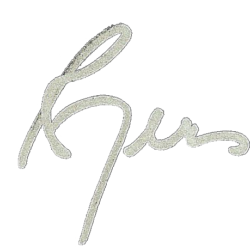Newport’s Rita Rogers channels her inner life
The Providence Journal
01:00 AM EDT on Thursday, October 15, 2009
Though it’s no longer the radical act that it once was, choosing to paint in an abstract style still takes a certain amount of artistic fortitude. While the subject matter can always carry some of the load in a realistic painting, abstract works have no such cushion. Compared with a painter of portraits or landscapes, the abstract painter has a much slimmer margin for error and much narrower range of effects — things like color, pattern and texture — to get his or her ideas across.
Yet despite the challenges, some artists wouldn’t have it any other way. A case in point is Rita Rogers, a Newport artist who’s the focus of a wonderful one-person show at the Newport Art Museum. Besides being a talented painter, Rogers is a passionate believer in the power of abstract art, particularly its ability to help artists channel their innermost thoughts and feelings.
In that sense, she’s a throwback to an earlier era when many artists saw abstraction as a more expressive, even more spiritual alternative to realism.
At the same time, Rogers is very much attuned to her own time and place. One of the highlights of the Newport show, for example, is a painting Rogers completed shortly after the 9/11 terrorist attacks in New York and Washington. Filled with dark cell-like patterns that suggest both growth and decay (and which seem to metaphorically identify terrorism as a kind of cancer), it manages to capture the tangled feelings of loss, sadness and confusion that followed in the wake of the attacks.
Like a number of works in the exhibit, the 9/11 painting also comes with a literary reference — in this case, a quote from Psalms (“For I have eaten ashes like bread”). Another work, William Blake and the Garden of Love, invokes the visionary poet-artist William Blake, although the painting’s dark colors and jagged brushwork feel more agitated than amatory. (If this is Rogers’ idea of a “garden of love,” one shudders to think what she’d do with a less upbeat emotion.)
In all, the show features about 30 paintings executed in variety of styles.
Some consist almost entirely of free-form marks and doodles — a kind of abstract calligraphy that Rogers excels at and that recalls the work of any number of artists, from Kandinsky to de Kooning. Others (including the 9/11 painting) feature organic patterns that suggest everything from plants and flowers to microscopic cells and organisms. In both cases, the paintings exude a sense of freshness and immediacy, as if Rogers were discovering something new with each stroke.
Though Rogers occasionally indicates a theme or subject, most of her paintings are “pure” abstractions, in the sense that they don’t refer to anything outside themselves. Unlike portraits or landscapes, they succeed or fail almost entirely on the energy that Roger brings to each mark and gesture. Indeed, many of the paintings are identified only by number — a tactic that further emphasizes their status as purely imaginative objects, free from any and all real-world references.
If Rogers has a weakness, it’s a tendency to work almost exclusively on the surface of her paintings. While that allows her to show off her considerable skills as a colorist and mark-maker, it also has the unfortunate tendency to make her work appear, at times, a bit flat and one-dimensional. In a show like this, with a large number of works hanging side by side, that can be a problem. A bit more attention to depth and spatial development would probably do the trick.
Still, that’s a minor complaint. While abstract art is no longer the revolutionary force it once was, it’s potential is far from spent, especially as a vehicle for spiritual and psychological exploration. All it takes is an artist with Rogers’ skill and passion to make it work.
“Rita Rogers: Selected Paintings” runs through Jan. 3 and “VISTA Redux: Photographs, 1969 by Federico Santi” runs through Oct. 25 at the Newport Art Museum, 76 Bellevue Ave. Hours: Tues.-Sat. 10-4 and Sun. noon-4. Admission: adults $10, seniors $8, students $6 and children 5 and under free. Contact: (401) 848-8200 or www.newportartmuseum.org.


